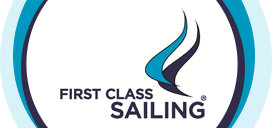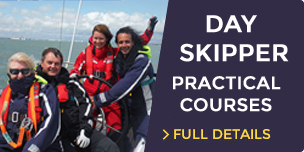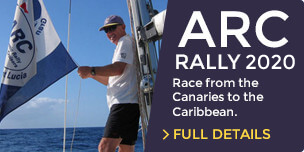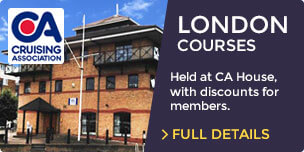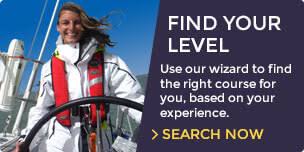Radar: A Clearer Picture for Your Yachtmaster Exam
2,128 views | April 9th, 2019This year the RYA has made radar knowledge a key component of all Yachtmaster exams. To find out why they have done this and how you need to prepare for your exam read on below.

Why do we still use radar?
Radar may seem a bit outdated as a technology with modern GPS navigation systems and AIS being widely adopted in the marine industry, but it still keeps its place as a very useful navigation tool in conditions of limited visibility.
AIS gives us a highly accurate picture of vessels around us and helps us to assess any risk of collision easily using GPS data transferred via radio waves on a short-range frequency. The system is almost perfect, but it does have a few weak points. The first is obvious: AIS will only detect other vessels with AIS fitted. All large commercial ships must have AIS fitted, however, not all vessels are required to do so.
The second limitation is not as clear. The information on your screen is not accurate to the second. Instead, it’s a time shot of data, captured anywhere up to 3 minutes ago. Different types of vessels will broadcast more often than others. Generally, power vessels will do so more than sail vessels due to the need to preserve power when under sail. It may not seem like much, but a large cargo ship travelling at 20 knots will be quite far down the road in 3 minutes.
Radar is the complete opposite. The picture is often unclear and it can take a bit of practice to make sense of the image. It is especially difficult to differentiate between types of targets. However, the image is reproduced every few seconds with each sweep of the dish. Giving you a very up to date image.
Used together these two systems complement each other perfectly and give the navigator a highly accurate and timely picture of the surrounding situation in all kinds of visibility. You could say that Radar knowledge is even more necessary in this day and age.
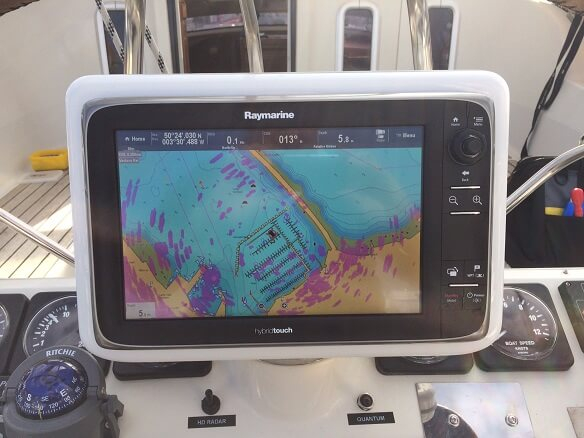
Why are the RYA suddenly including Radar?
The Yachtmaster Offshore ticket is handled by the RYA under mandate from the Maritime Coastguard Authority. The MCA has allowed the Yachtmaster certification to be part of the process for attaining the MCA Officer of the Watch (OOW). Because of this, Radar has always been a part of the syllabus.
RYA examiners have 6-8 hours to work out if a candidate meets the standard and can draw upon a large syllabus in order to do this. There simply isn’t time to test everything and Radar has fallen by the wayside over the years. The MCA has noticed that Yachtmaster candidates for the OOW certification have become weak in this section, and so have asked the RYA to refocus on this area.
This means that a portion of all exams going forward will feature some Radar work in some form or another. If no radar is fitted on the vessel, then radar plotting sheets could be used. Candidates are not expected to be experts, but no knowledge could lead to an unsuccessful bid, and mediocre knowledge could tip an exam that is hanging in the balance over the edge.
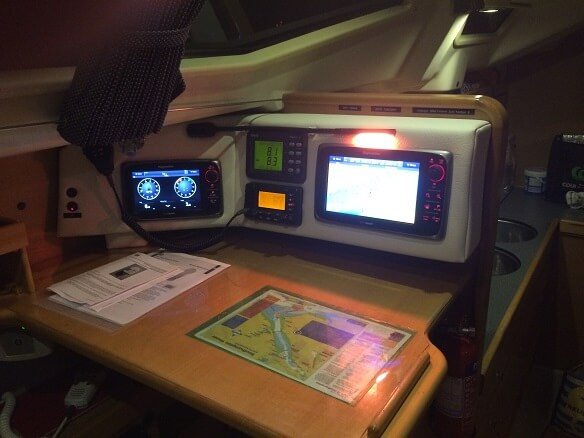
I’ve hardly used radar, how do I prepare for my exam?
The simplest way to ensure you’re ready for this section is to complete the RYA Radar course. The course is a good introduction and teaches you to use plotting sheets, as well as how to adjust the unit for a clearer picture. Get in touch with the office if the dates on our website don’t suit you.
Failing which, there is no better substitute than jumping on a boat and having a play. Try it in good visibility. Practice as though you’re in a thick fog and then check yourself by coming up on deck and seeing if your targets make sense.
Like the SRC (VHF) course, radar should be a necessary skill of every sailor. It’s popularity has waned in this modern era, however, a true Yachtmaster would add this feather to their cap.
Posted by: First Class Sailing
